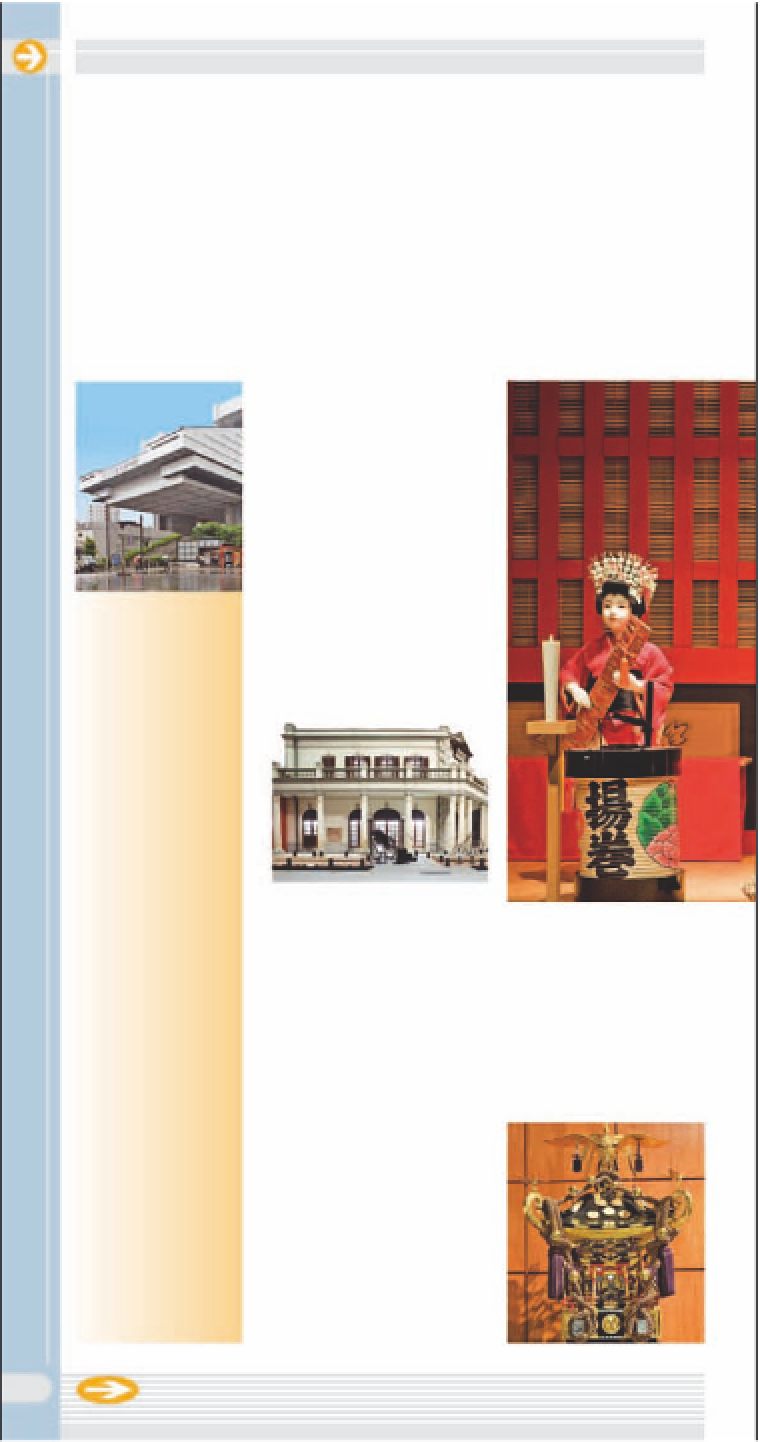Travel Reference
In-Depth Information
Edo-Tokyo Museum
Charting the history of Edo and Tokyo, the Edo-Tokyo Museum is housed in
an elevated building that resembles an intergalactic space station floating on
stilts. Its height, which dwarfs every other building in the vicinity, replicates
Edo Castle, and the raised edifice is modeled after a traditional Japanese rice
storehouse. More modern touches include the red escalator that rises from
the terrace to the underbelly of the cantilevered upper stories, and the panels
coated with fluorine resin. Highlights include a replica of Nihonbashi Bridge
and an evocative reconstruction of the 1945 air raids that ravaged Tokyo.
Top 10 Features
1 Westernization
2 Photos of Edo-Meiji
Periods
3 Portable Festival Floats
4 Daimyo Lodgings
5 Districts
6 Kabuki Theater
7 Row House Tenement
8 Woodblock Printing
9 Nihonbashi Bridge
0 Life of Craftsmen
and Townspeople
Entranceway, Edo-Tokyo
Museum
A small, refundable
deposit is required for
borrowing earphones
that provide audio
commentary.
Volunteer guides are
available for tours
in English, French,
German, Spanish,
Chinese, and other
languages. Call the
museum at least two
weeks in advance to
reserve a guide.
!
Westernization
Tokyo's experiment
at assimilating Western
trends is visible in the fifth-
floor models of early
buildings designed by
European architects and
engineers
(above)
. Prewar
culture is represented in
themes such as “The Rise
of the Working Woman.”
#
Portable Festival
Floats
The exquisite
omikoshi
(below)
are crafted for
use during traditional
festivals. These portable
shrines are lacquered,
gold-plated, and encrus-
ted with precious stones.
Coffee House Café
Cardenas on the
seventh floor serves
tea, cold drinks, and
light snacks.
• Map H3
• 1-4-1 Yokoami,
Sumida-ku
• 3626-9974
• Ryogoku, Hanzomon
subway, JR Sobu line
• Open 9:30am Tue,
Wed, Fri-Sun;
9:30am-7:30pm Thu
• Adm
• www.edo-tokyo-
museum.or.jp
@
Photos of Edo-Meiji
Periods
By the Meiji era (1868-
1912), sepia-toned images
of samurais and rickshaw
pullers became outdated.
These gave way to photo-
graphs of Western-style
hotels, trams, exhibition
sites, and factories along
Sumida River.
14









































